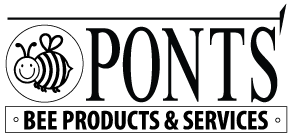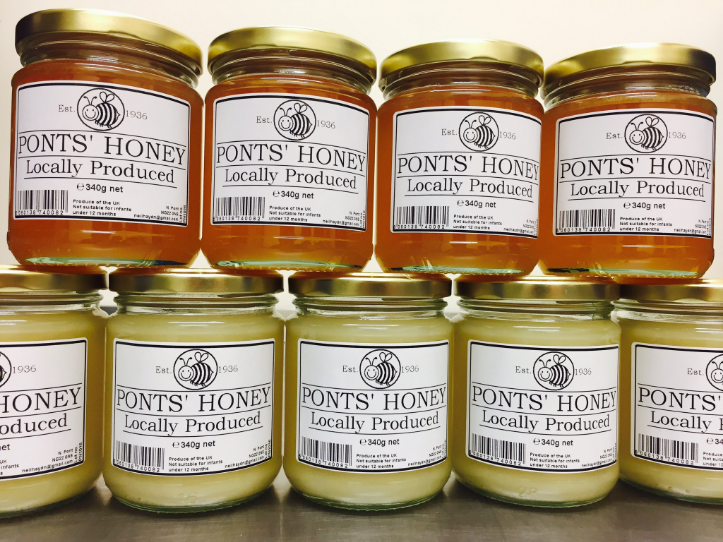Honey crystallizes naturally
Lovers of good honey may mistakenly believe that when honey crystallizes or sets, it has somehow gone off. This is not the case, in fact it is a sign of quite the opposite.
Most honeys will at some point become crystallized or set. This is a sign that it is genuine pure honey and that it has not been overheated or filtered excessively. The reason why some honeys crystallize quickly and others do not, and also why different honeys vary in colour and flavour, is all down to the type of flowers that the bees gathered the nectar and pollen from.
It is the balance between the naturally occuring sugars in honey that is the main factor that determines how fast the honey crystallizes. We try to choose honey that is likely to stay clear and not set too quickly to put in jars for our clear honey. The honey that we think is likely to set quickly is “creamed” and jarred for set honey. Creamed means we put the honey into a machine that breaks the crystals as they form, so the honey sets, but not to a rock hard consistency. Nothing is added to the honey when we cream it. We don’t always get it 100% right; it’s our best guess as to which flowers the bees collected the honey from. As a consequence, sometime our clear honey starts to set before the jar is empty. There are other factors involved in the crystallization process, such as the storage temperature, mineral and enzyme content in the honey.
Restoring Honey to its clear/liquid state
Honey can easily be restored to its clear/liquid state by warming it very gently. Overheating honey destroys the enzymes naturally found in honey and can spoil the taste. Standing the jar of honey in a bowl of warm water is usually enough to restore it to liquid. A microwave oven on a low setting for a short time will also do the trick. Microwaves vary greatly, so start off cautiously and increase the time if you need to; stirring the honey intermittently will speed up the process. Don’t forget to remove the metal lid before if using the microwave method.



